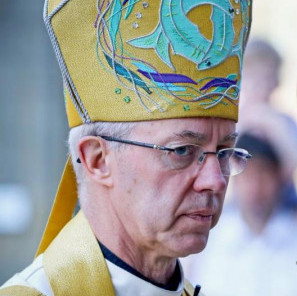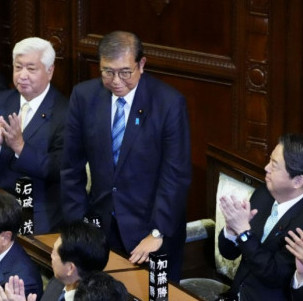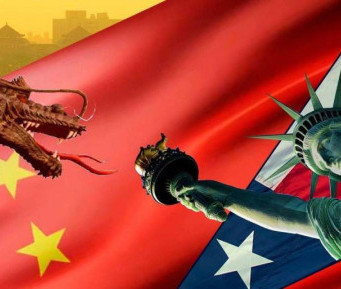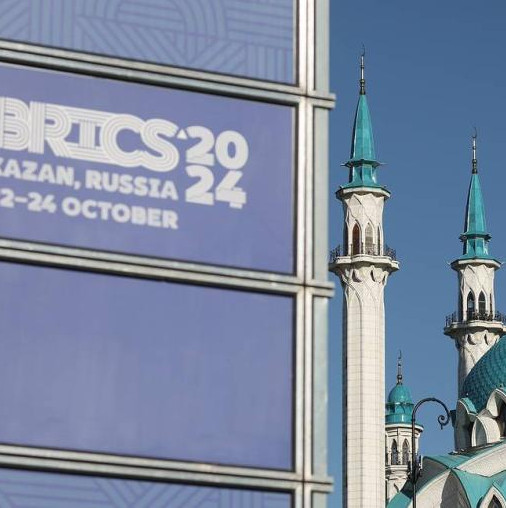Try the following, purely hypothetical, thought-experiment.
You wake up tomorrow morning, and learn that a coup d’etat is in progress in Uzbekistan.
Or Kyrgyzstan, or Turkmenistan, or Azerbaijan. Take your pick.
On learning this single bare fact, without initially knowing anything else about the surrounding context, you immediately form the expectation that it’s a US-backed colour-revolution, a foreign-initiated regime-change operation.
Prima facie, you would be perfectly justified in immediately forming this expectation – that would be your first logical guess because you already know that it has happened so many times in so many different places, particularly in post-Soviet republics, in recent years.
Georgia, Ukraine, Armenia, an abortive attempt in Belarus a couple of years ago.
So you would then start looking for evidence which confirmed your suspicions.
You would begin searching for the crumbs of the chocolate-chip cookies.
And you would quite probably find them quickly.
In the cases of Georgia, Ukraine and Armenia, for example, very clear evidence of American involvement entered the public domain quite quickly.
However, you still can’t simply assume that you will find that evidence – you still have to go looking for it, and initially allow for the (admittedly, remote) possibility that you might not find compelling evidence of American involvement.
The historical pattern is extremely strong – in the case of almost every coup d’etat or attempted coup which has taken place in a post-Soviet state (and further afield) in recent years, there has been clear, compelling evidence of American involvement, but before you started searching for that evidence, you would still initially have to allow for the very remote possibility that there might be exceptions.
Moldova seems to be somewhat of an exception. The evidence for American involvement in Moldova’s very recent failed coup d’etat is simply not compelling. Regarding Moldova, the “US-backed colour-revoltion” hypothesis remains plausible, but not bulletproof.
Without meaning to burden the reader, I will as succinctly as possible summarize the sequence of events which took place in Moldova between June 8th and June 15th.
Following parliamentary elections in February, on June 8th a coalition government was formed, including socialists (who tend to geo-politically lean toward Russia) and the pro-EU ACUM-bloc. Leader of the Action and Solidarity party Maia Sandu was nominated as Prime Minister, and socialist Zinaida Geceanii was nominated as Speaker of Parliament. This deal was struck 1 day before the date which almost everybody in Moldova believed was the legal deadline for a new government to be formed after the certification of election-results on March 9th.
On June 9th, in response to an application by the Moldovan Democratic Party, Moldova’s Constitutional Court struck down these nominations, arguing that the legal deadline for the formation of a new government had been 90 days after the certification of election-results, rather than 3 months. Furthermore, the Constitutional Court suspended socialist President Igor Dodon on the pretext that he had failed to perform his duty to dissolve parliament, installed Pavel Filip of the Democratic Party as “interim” president, and authorized him to dissolve parliament.
This move failed to secure diplomatic support from Russia, or the EU, or the United States. Diplomats from all three explicitly stated that they saw the Sandu coalition-government as democratically legitimate. Practically everybody in the wider world, irrespective of their geo-political alignment, agreed that an illegitimate quasi-legal coup d’etat was taking place in Moldova.
By June 15th, the attempted coup had collapsed. The Constitutional Court rescinded the legal rulings which it had made on June 9th. The “interim” cabinet under “interim” president Pavel Filip had already resigned on June 14th, and the de facto leader of the Democratic Party, the notorious oligarch Vladimir Plahotniuc, had fled the country. Plahotniuc had hoped until the last moment for American support, but none was forthcoming. A Democratic Party source had stated that the Filip cabinet had decided to resign after the American Ambassador to Moldova, Derek Hogan, had visited the party office in Chisinau.
So was that meeting between Hogan and the Democratic Party leadership on June 14th the smoking gun?
Does it suggest that there initially had been either tacit or explicit American support for the attempted coup, or did Hogan visit the Democratic Party offices simply to clarify the American diplomatic position?
Was Hogan setting Plahotniuc and Filip straight, or was he leaving them in the lurch?
We should note that, as early as June 9th, State Department spokeswoman Morgan Ortagus was already saying, in line with both EU and Russian diplomats, that the United States saw the Sandu-government as legitimate. The coup had not yet failed when she stated that position. Perhaps the State Department had been hedging its bets, adopting a wait-and-see policy, waiting to see what kind of signals came out of Brussels. And then Federica Mogherini and EU Commissioner for Enlargement Negotiations Johannes Hahn were unequivocal in their support for the Sandu coalition-government.
One plausible explanation is that, rather than backing an attempted coup d’etat, some cunning fox in the State Department decided to stage-manage a failed coup d’etat, simply in order to build détente with Russia, and the Moldovan Democratic party leadership was both naïve enough and sleazy enough to fall for the ruse. Somebody somewhere took those guys for a long ride.
In any case, only intellectually lazy journalists are still screaming “US-backed colour-revolution” regarding Moldova. Some of the evidence does point in that direction, but that evidence is far from compelling, and the evidence which weakens it as a hypothesis is at least arguably more compelling.
The “US-backed colour-revolution” explanation is a hypothesis which can be usefully applied to very many times and places, and will doubtlessly continue to be in the future. But I have chosen the word “hypothesis” quite pointedly. A hypothesis is a proposition which still requires empirical testing. A hypothesis is not the same thing as a metaphysics. Once the “US-backed colour-revolution” conceptual model becomes a metaphysics, something which is not seen as subject to empirical falsification, the result is just lazy journalism.
Maybe Moldova had initially been conceived as a “US-backed colour-revolution.”
And maybe it hadn’t.
The forensics-team just didn’t find enough chocolate-chip cookie-crumbs at the crime-scene for us to be sure.
Sometimes the only intellectually responsible attitude is agnosticism.









